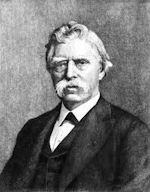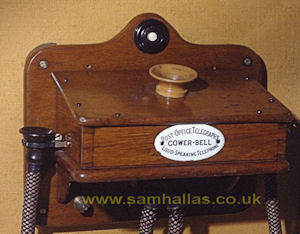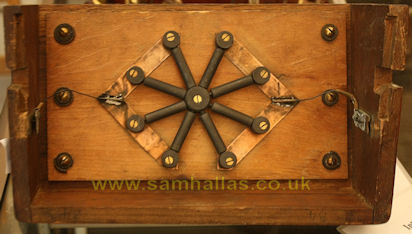
David Hughes

Sam Hallas' Website
>
David Hughes
Welsh-born Scientist David Hughes (1831-1900), although a professor of music in Kentucky, is now remembered as a prolific inventor. He made his money from the invention of a printing telegraph system that was adopted by Western Union. Hughes moved back to Britain in order to market it in Europe.[click the images for a larger view]
Whilst in London he discovered what would now be called the principle of microphony. Where two conductors are in imperfect contact the vibrations of sound waves cause the resistance between them to vary. Any conductor would do – even rusty iron nails. However, Hughes found, as had Edison, that the best material for producing this effect was carbon. He revived the term ‘microphone’, coined by Wheatstone years earlier, to describe his telephone transmitter.
David Hughes presented his findings to the Royal Society in London in 1878, but refused to patent the invention, leaving the field open to others to profit from his discovery.
The basic design was a wooden sounding board or diaphragm, usually made of deal (ie pine). Behind the board was a network of several carbon pencils loosely suspended in blocks of carbon or metal.
The Crossley design, which was the first to be adopted by the British Post Office, used four pencils in a diamond shape. It was soon superseded by the Gower microphone with eight pencils, which saw service with the BPO from 1880.
The principle of microphony and the use of carbon set the pattern for telephone transmitters until the 1970s. The carbon microphone went through several major improvements over the years.


Gower-Bell Telephone and Underside to show transmitter pencils
The Evolution of British Post Office Telephones, H.J.C. Spencer, POEEJ, Aug-Sep 1953
Telegraphy, 9th Edition, W.H. Preece & J. Sivewright, Longmans, Green & Co, London, 1891
David Hughes: Wikipedia
Telephony, T.E. Herbert & W.S. Procter, Sir Isaac Pitman & Sons, London 1934
Hughes microphone redrawn SMH from Herbert & Procter
Gower microphone redrawn SMH from Preece & Sivewright.
Exhibit photo: BT Museum, London © 1995 Underside, MK Museum, © 2010 Sam Hallas
This article was published in the Telecommunications Heritage Journal Issue 75, Summer 2011
 The Edison
The Blake
The Edison
The Blake